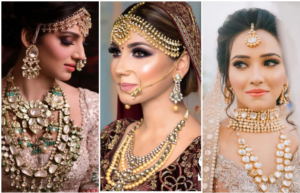
How to choose your shoes? Leather quality
The price is already an indicator. A pair of shoes at €90 is not (and never will be) “normal”. Skins and other materials, labour, transport, marketing, sales, taxes: no miracles!
Low-cost shoe manufacturers take on all the costs, starting of course with the salaries of those who make them (not to mention the materials, the types of assembly)… Remember that a well-made product, in addition to being clearly more beautiful, will also last much, much longer.
Mmmmh beautiful cheap shoes with atrocious leathers: who can say worse?
The place of manufacture can also give a good indication of the quality of the shoes. Despite what we constantly try to make believe in order to defraud the customer, Italy, France and the United Kingdom remain the greatest shoe experts in the world, without forgetting Spain and Portugal (more recently).
Why ? Simply because it is in these countries that know-how was created . You can absolutely come across a badly made Made in Italy pair, that’s for sure, but it’s clear that it’s often a guarantee of quality. The workforce fully deserves to be recognized for the work it is able to offer.
Shoe craftsmanship has been built for centuries in Europe. Salvatore Ferragamo (here in his workshop) is one of those remarkable names in the history of luxury shoes: he started working as a bootmaker at the age of 11!
Finally, there is no irrefutable formula to say whether or not a shoe is of quality: I am simply sharing with you some advice that has been passed on to me by good shoemakers.
In the first part of this article, we will focus on leather, which is the basic material of quality shoes. If you want to go into detail, I wrote the leather guide some time ago , which works for clothes as well as for shoes.
How to recognize quality leather for shoes?
With few exceptions or style choices, good shoes are made from leather. It can be dyed in every color imaginable, it offers an incomparable texture and can last a very, very long time.
A distinction is made between the different qualities of skins, then between the treatments (color, possible protections, etc.) that they then receive to truly become leather. A brief reminder…
In descending order of quality:
Full flower. All the layers of the skin are preserved, and especially the upper part of the dermis, the most beautiful and the softest! In terms of finishes, they are often found aniline or dipped, that is to say only bathed in a bath of pigments or dyes: their texture is exceptional, but these skins remain very exposed to dirt.
Boxcalf (calf tanned with chromium salts, more appropriate than vegetable tanning for shoes) is the most common example, with a perfect smooth finish. This layer is also excellent for all suede leathers: sanding suede or nubuck reveals the slightest imperfection!
machine-leather-nubuck
The flower is passed through this big, but delicate machine, which will sand it down to obtain the nubuck.
The corrected flower. The top layer of the dermis is removed because it has imperfections, but it will never look as good as a full grain. Most often, it receives treatments to be pigmented, and smoothed / protected by a thin transparent film.
The split leather. We only keep the lower layers, the strongest but also the less beautiful. The “pigmented” finish mummifies the skin in a sarcophagus of opaque dyes with the aim, again, of making it uniform. This treatment often generates a rather unearthly shine, which will be unpleasant to see and touch.
Appearance of good leather
Many skins are exploited for the finesse of their grain and their very smooth appearance. Veal (widely used), lamb (rarer), but also buffalo or deer with their large grains, gratify us with their superb textures.
Well-worked, their appearance will vary from matte to shiny depending on the finish, but the essential element of quality leather will be its regularity. Whether the grain of the skin is fine or accentuated (grained/tumbled leathers), it must be the same over the entire surface.
Paul Evans smooth leather shoe
The grain is fine, regular, and captures the light well: an excellent sign (Souliers Paul Evans).
The boxcalf, which we have mentioned, is a refined and elegant leather: at the sight, it offers a natural shine. The light reflects diffusely on this material, sometimes revealing certain shades of color depending on the desired effects.
Velvet leathers
As their name suggests, suedes and other nubucks have a velvety appearance thanks to the sanding they have undergone. So obviously, visibly, the closer we get to a “peach skin” texture, the better the quality will be!
Avoid too coarse aspects as much as possible, even if it is rare to find on shoes the finesse of the “grain” that we find in ready-to-wear.
A good “test” of the quality and regularity of suede leather: run your finger over it. If you get a clear mark, you can deduce that the finish is good!
Finally, this type of leather work does not forgive any imperfections: sanding reveals absolutely all the small defects of a skin. Needless, therefore, to specify that it will be necessary to be vigilant on this point, because it can really harm the aesthetics of the shoe!
Nothing could be easier to recognize smooth quality leather by touch: it is soft and even . Note that for glazed leathers, the smooth feeling will be pushed to the extreme.


